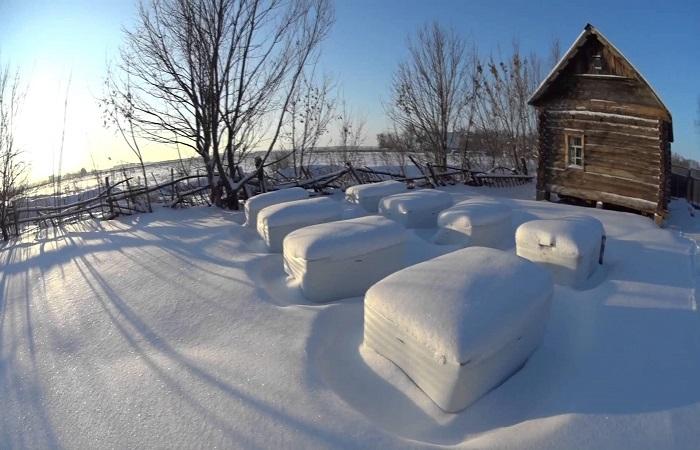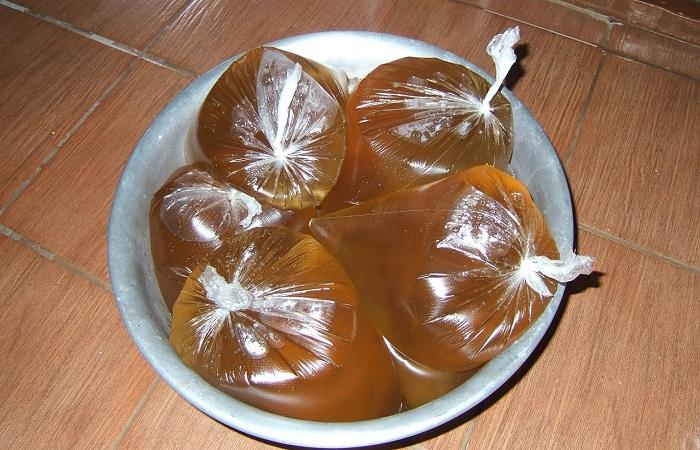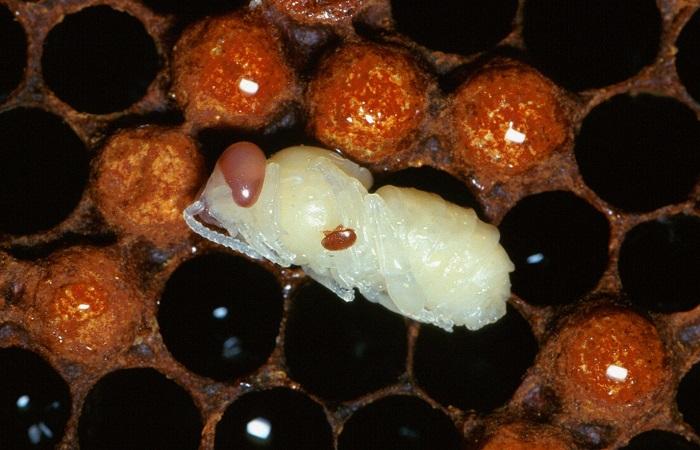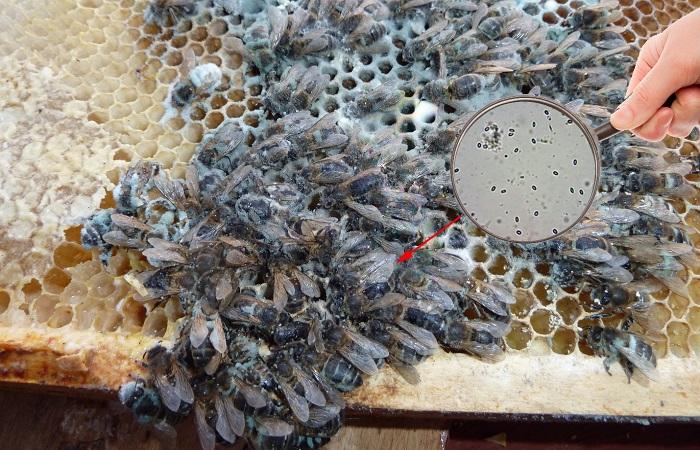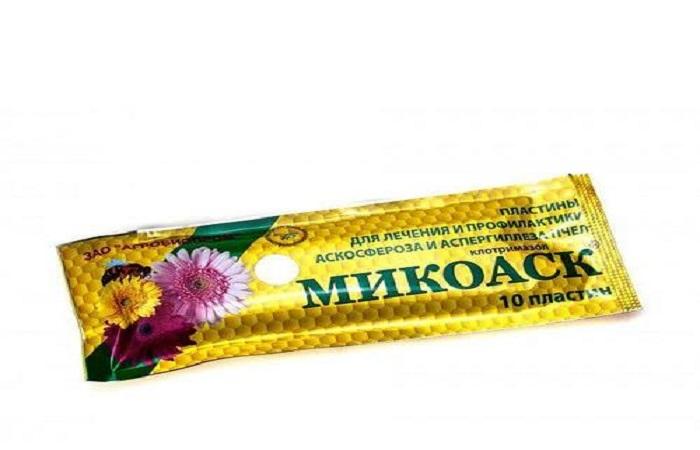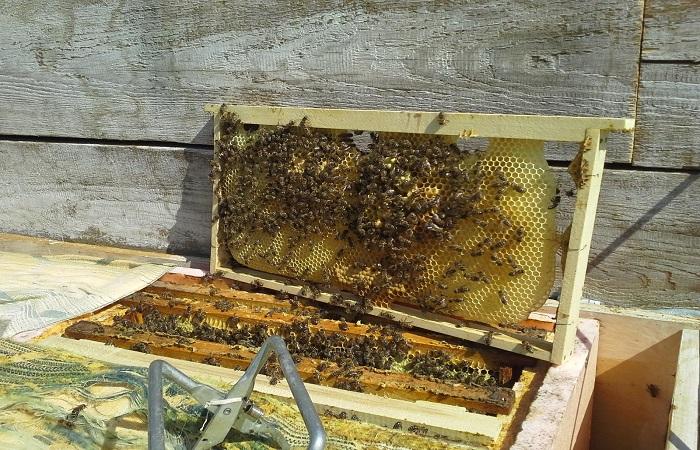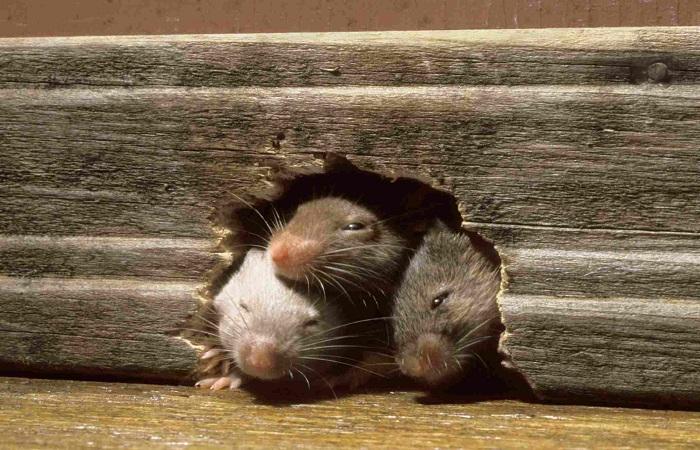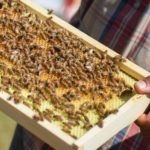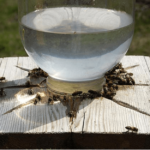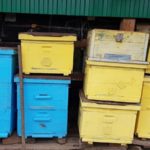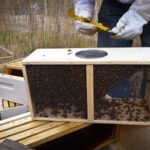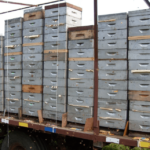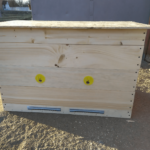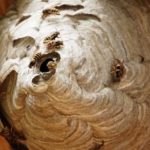Bee families that are reared by humans must be properly collected for wintering. Preparations in the apiary begin with autumn work. It is important to familiarize yourself with the necessary processes in advance, choose clothes and suitable equipment. If you skip at least one stage, you can lose your bee colony, and next year you will have to start all over again (buying and breeding families).
Why do you need autumn work in the apiary?
The winter months are the most unfavorable period for domestic bee colonies.Regardless of the region and climatic conditions, starting in autumn, the temperature drops and cold weather sets in. This means that the amount of food for insects is significantly reduced or disappears completely.
Attention! With the help of autumn work, the beekeeper prepares bees and houses for the difficult winter period, protecting bee families from extinction. Wild bees do not need such procedures, and from domestic bees, humans take most of the food collected over the summer.
Top dressing
Caring for bee families is impossible without providing the insects with additional food. Beekeepers use sugar syrup:
- take 1.5 parts sugar;
- mix with one part water;
- dilute until completely dissolved.
Previously, the ratio used for syrup was two to one. However, the solution turned out to be thick, which prevented the bees from fully digesting it.
The apiary owner also needs to determine the feeding method:
- common - one feeder for all bee colonies in the apiary;
- individual - food is displayed separately for each house, which eliminates competition between families and mass death of insects.
Which option is more suitable depends on the nature of the bee colonies (the first option is suitable for less aggressive ones).
Treatment
In order for wintering to be successful, you need not only to feed the bee colonies, but also to treat the houses from pests and some diseases. During the cold months, immunity decreases due to the state of suspended animation that individuals enter to survive the cold. Preventive measures are taken against the following diseases:
- varroatosis;
- development of fungal deposits;
- the appearance of foulbrood;
- nosematosis
Attention! A distinctive feature of the use of chemicals is addiction to their action. The immunity of bee colonies adapts to the influence of chemicals over time, so it is recommended to choose new ones once every two to three years.
In addition to artificially created substances, folk remedies are used. These are considered gentle and safe. For example:
- lavender alcohol solution - add 6-7 drops of lavender oil to 100 g of alcohol (96%), pour the mixture into a saucer, which is placed in the house, then wait until the liquid has completely evaporated;
- green thyme - several freshly cut branches need to be finely chopped, evenly distributed over gauze and placed on the grates on top, after drying you need to repeat the process, in most cases you need to do it 2-3 times;
- sorrel acid solution - you need to purchase a concentrate and dilute it to 2% with water, then spray the frames (about 10-12 ml per element).
In order not to aggravate the situation, it is recommended to carry out prevention regularly. To do this, you can spray the houses with chemicals; be sure to inspect them before moving young individuals in for the presence of parasites or signs of their vital activity.
Attention! In addition to these methods, it is necessary to monitor the strength of the families growing in the apiary. Weak bee colonies need to be eliminated - united among themselves or destroyed.
Larvae and pupae are more susceptible to fungal diseases.They do not have a developed defense system, so there is a high probability of developing an infection. The reason is often unfavorable living conditions of the houses. For example:
- location of houses in constant shade;
- natural or artificial humidity;
- insufficient ventilation.
If fungus is detected, the infected gratings must be removed and the honeycombs melted into wax. The sick family is moved to a clean, treated house, and the queen is replaced. The next stage is treatment with fungicides (Askotsin, Mikoask, Unisan and others are suitable). To sterilize an infected house, use chlorine, manganese or another household disinfectant.
Foulbrood and nosematosis are bacterial diseases. The danger is as follows:
- difficult to recognize in the early stages;
- causes putrefaction of the larvae, an unpleasant odor and discoloration of the offspring;
- spores can remain in the nest for up to 30 years, waiting for favorable conditions.
Sick families must be destroyed, then disposed of, and the house must be disinfected with an available household chlorine-containing product. Details in the video.
Insulation
To overwinter, bees need a warm place. It is not recommended to move families from their family home - only entirely, to a cool basement. Otherwise, it is important to complete a number of preparation measures in time. These include:
- the use of fibrous materials (they have the necessary breathability, which does not allow moisture to accumulate and sink to the bottom of the home);
- The walls of the houses need to be covered with the selected material, the main thing is to leave small holes in the upper and lower parts for fresh air and removal of carbon dioxide.
Proper ventilation will help get rid of excess moisture, which can kill the bee family before spring.
Audit
The beekeeper must carry out this procedure every year, at the beginning of autumn - the first days of November are approaching. Caring for an apiary means, among other things, promptly identifying non-viable colonies and weakened insects, after which they can be:
- liquidate;
- unite several weak families;
- add offspring to the family to increase the bee family.
Attention! The latter option is possible only if the family has a sufficiently strong queen, which produces hardy offspring in the quantity required for reproduction (usually young queens).
Building bee colonies
It is important that the required number of bees enter winter hibernation. Therefore, the beekeeper needs to carry out work to increase the number of bee colonies. Necessary actions:
- perform layering of individuals in the fall so that the queen continues to lay eggs even after the last honey collection;
- provide the family with sugar syrup or other food in a timely manner;
- Insulate bee homes in time to catch the temperature drop.
Preparatory measures to increase the number of insects in the nest will help make the bee family strong enough. You can see more details in the video.
Dates
Work to prepare bee families for winter is carried out in accordance with a certain schedule. For better gradation, use the monthly designation of periods - September, October and November.
September
In most regions of the country, the last honey harvest occurs at the beginning of September. Then you need to quickly perform the following steps:
- treat the house of the bee family from varroatosis;
- feed families;
- stop the queen from laying eggs.
If at the end of the month the thermometer readings drop sharply, you should quickly insulate the homes of bee families or prepare special winter huts (omshaniks).
October
During this period, it is no longer possible to find brood in the home of bee colonies; insects begin to form a club for the winter. It is necessary to remove all means laid out to combat ticks. The houses of bee families need to be reinforced with metal bars to protect them from rodents, which become even more annoying in winter.
November
This month marks the end of the beekeeping season. The beekeeper needs:
- regularly inspect the houses of bee families;
- check the integrity of the houses;
- inspect the installed insulation and protection against rodents.
If you plan to transport houses, you need to correctly determine the day - severe frost is not suitable. It is better to wait for the temperature to be as close to zero as possible.
Preparing bee families for winter is one of the most important processes in caring for an apiary. Following these steps will help colonies survive the cold and welcome spring with strong bees ready for the new season.


